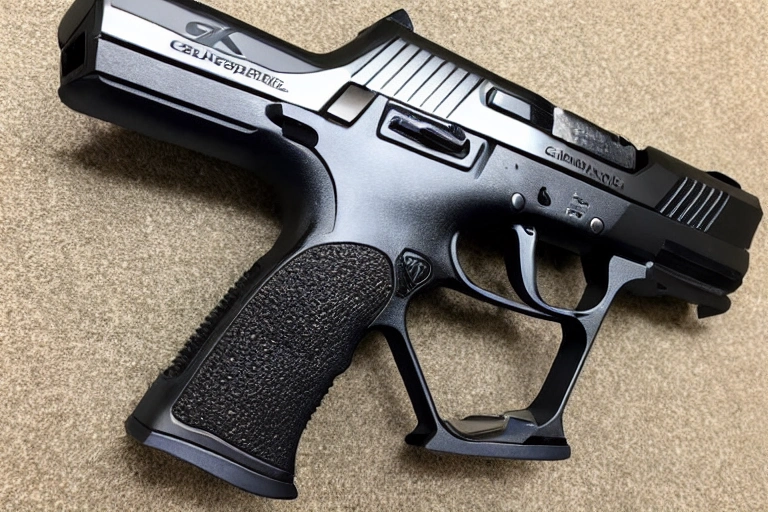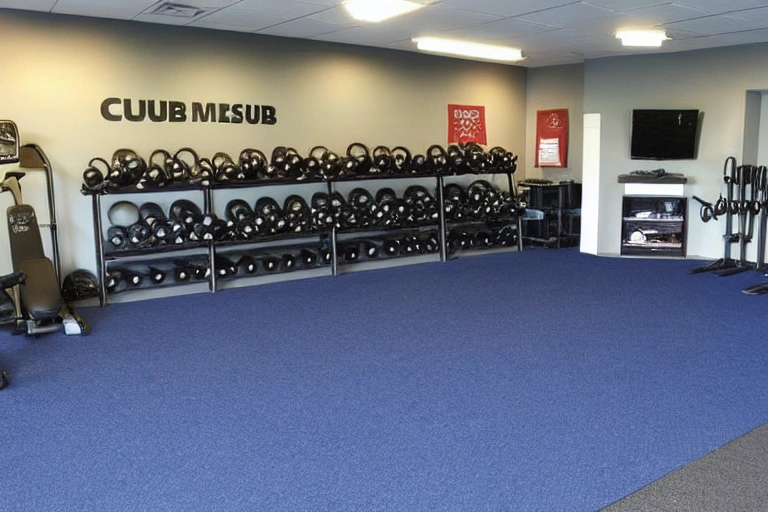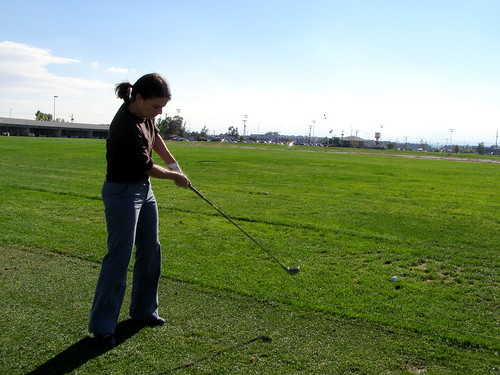Unlock the Key to Mastering Golf: Find the Best Clubs for You!
Are you looking to take your golf game to the next level? Selecting the right golf club can make all the difference! But it can be difficult to know which one is best for you. In this blog post, we’ll cover all of the factors you should consider when selecting a golf club so that you can choose one that matches your playing style. Read on to find out more!
more
Introduction to Golf Clubs
If you’re thinking about taking up golf, your first step is to choose the right club. There are countless choices available on the market, and it can be tough to know what will fit your needs. In this article, we’ll give you a brief overview of the different types of golf clubs, explain their capabilities, and recommend one that will work best for you.

Types of Golf Clubs
There are many different types of golf clubs available on the market, and it can be difficult to decide which one is right for you. Here are some tips on how to choose the right golf club for you:
If you are a beginner, it is best to start with a basic club. A beginner’s club will have a smaller head and is easier to control.
If you are a more experienced golfer, you may want to consider upgrading to a better club. A better club will have a larger head and be more difficult to hit. However, it will also be more accurate and give you a better shot.
It is also important to consider your budget when choosing a golf club. Some clubs are more expensive than others, but they may offer better performance.

Choosing the Right Club for Your Skill Level
Golfers of all levels can benefit from choosing the right club. However, for those new to the sport or those who want to improve their game, it is important to choose a club that is appropriate for your skill level. Different clubs are better suited for different types of shots.
In this article we will discuss the different golf clubs and their uses.
For beginner golfers, a shorter driver may be more preferable due to its lower trajectory and easier forgiveness on off-center hits. A hybrid or fairway wood would then be a better option as it has longer than average shafts which help avoid poor shots around the green when used off-the-tee with an uphill putt attempt. Intermediate/advanced players should consider adding an iron into their arsenal as they learn to control their ball more closely and create more accurate shots around the greens. An iron offers users both distance and accuracy making it well suited for chipping, pitching and putting strokes from shortrange distances around the green. As players start hitting bunkers less frequently owing to improved technique, a wedge may become a better choice as it maintains most if not all of its distance even when struck badly off center causing OB (Out of Bounds).

Understanding Loft and Lie Angles
When shopping for a golf club, you will want to consider both loft and lie angle. Loft is the length of the club from tip to toe, while lie angle is the angle of the clubface at address.
Loft is important for those with slower swings because it affects how far the ball goes off of the club. For those with faster swings, however, lofts that are too high can cause them to hit low shots or hooks.
Lie angle is important for those who want an accurate shot because it determines where on the face ofthe clubface contact will be made when swinging. A higher lie creates more spin on shots played down hill and a lowerlie creates more slice swing

Club Length and Shaft Flexibility
There is no single golf club that will work for everyone, and there are many factors you should consider when selecting the right club. Club length is one of the most important factors to consider because it affects how you hit your shots. The Loft and Lie Angle charts on page 5 of the GOLF GUIDE book give an idea of what clubs are best suited for different players, but you’ll also want to think about your swing type and personal preferences when making a selection. For example, someone with a long swing may prefer a longer club so they can get more power out of their swings. Conversely, someone who shortens their backswing may need a shorter club to help them control their shots.
Shaft flexibility is another important factor to consider if you have trouble getting the ball up in the air or staying in bounds on off-center hits. A flexible shaft will allow you to adjust your grip on the club while hitting without causing undue stress on the shaft or head of your golf club. This can help improve accuracy and distance off center hits.

Selecting the Right Grip Size
There are a few factors to consider when selecting the right grip size for you.
First, the grip size should fit comfortably in your hand. Second, the grip size should be large enough to provide good control but not so large that it becomes cumbersome to hold. Third, the grip size should be small enough to allow for a good swing speed. Finally, the grip size should be proportional to your hand size.

Evaluating the Weight of the Clubhead
Evaluate Your Current Skill Level
Golf is a sport that can be enjoyed by people of all ages, levels of experience and body types. However, one factor that affects how fun and enjoyable the game can be for everyone is the weight of the clubhead.
When selecting a golf club, it’s important to consider both your current skill level and the weight of the clubhead. For beginners or those new to golf who are just starting to learn about techniques like proper stance and swing, lighter clubs may be more forgiving. However, as you improve your skills and understanding of Golf Swing, you may find that a heavier club helps you hit better shots with greater accuracy.
There are a few things that you can do in order to Evaluate Your Current Skill Level and choose the correct club for you. First, take a look at your current golf swings and try to determine which techniques work best for you. Once you have a general idea of what works well for you, begin using heavier clubs when practicing on your own or playing in tournaments with others.
Second, consider your body type and how weight impacts distance. Lighter people can often carry more energy through their lower extremities than those with more muscle mass in their upper bodies, which may account for why they are able to hit farther with lighter clubs than those with more weight distributed throughout their body. However, if you’re trying to improve your distance or accuracy while playing against others in competitive settings, it’s important to select a club that is able to putt well as well.
Ultimately, the weight of the golf clubhead is a personal preference that can be adjusted based on your skill level and body type. By evaluating these factors, you’ll be able to find the perfect club for your game!
Consider Your Preferred Playing Style
The weight of the clubhead is an important consideration when selecting a golf club. For those who prefer a more aggressive style of play, a heavier clubhead will be more suited. Conversely, for those who prefer a more finesse style of play, a lighter clubhead will be more suited.
Another factor to consider when selecting a golf club is your preferred playing style. If you are a power hitter, you will want to select a heavier clubhead to give you the power to hit the ball far. Conversely, if you are a finesse player, you will want to select a lighter clubhead to give you more control over the ball.
Research Different Club Types
When it comes to selecting the right golf club for you, weight is a critical factor. The heavier the clubhead, the more stable it will be in the air and on the ground. However, there are also lighter clubs that are more responsive. It all comes down to personal preference.
To evaluate the weight of a golf club, you’ll need to find a scale that can measure in pounds and ounces. Once you have that information, you can compare different club types and select the one that feels the best in your hand.
Test Out Different Clubs
There is no single right answer when it comes to selecting the right golf club for you. It all comes down to finding the correct weight and balance that feels comfortable in your hand. Evaluating the weight of the clubhead can be done by test driving different clubs or using a professional handicapping service. Test out different clubs at each weight until you find one that feels most comfortable in your hand.
Comparing Different Brands of Clubs
Assess Your Skill Level
When it comes to buying a golf club, there are many things you need to consider. The club that you select will depend on your skill level, the course you’re playing and your personal preferences. However, there are some key factors that all golfers should take into account when selecting their clubs.
First and foremost is your skill level. If you’re a beginner, for example, then a less expensive club might be best suited for you. Conversely, if you’re an experienced golfer who wants to upgrade your game, then pricier clubs may be more appropriate.
Next, consider the type of course that you’ll be playing. A wide variety of courses require different types of clubs: sand greens call for irons, while grass greens require fairway woods. You might also want to buy clubs specifically tailor-made for a certain course.
Lastly, consider your personal preferences. Do you like lofts in your clubheads? Is a long iron more your style? These are all factors that you’ll need to take into account when selecting a golf club.
Understand the Different Types of Golf Clubs
Choosing the right golf club for you is an important decision. You need to consider your swing speed, club head type, and grip type. Here are some tips to help you choose the right golf club.
Your swing speed is important because it affects how far you can hit the ball. The club head type affects how the ball will fly and the grip type affects how you hold the club.
Club head type: There are three main types of club heads: a wood, an iron, and a hybrid. Wood club heads are the most popular because they fly the farthest and are easiest to hit straight. Iron club heads are middle of the road in terms of distance and accuracy, but they are more durable than wood and hybrid club heads. Hybrids are the least popular because they don’t fly as far as wood or iron club heads and are harder to hit straight.
Grip type: There are two main grip types: a standard grip and a two-handed grip. A standard grip is the most common, and it’s the grip you’re probably used to. Two-handed grips are more difficult to hit with, but they give you more control over the ball.
Club type: There are three main types of golf clubs: woods, irons, and hybrids. Woods are the easiest to hit because they have a thin head and a short shaft. Irons are middle of the road in terms of distance and accuracy, but they have a thicker head and a longer shaft. Hybrids are the hardest to hit because they have a thick head and a short shaft.
Understand the different types of golf clubs and test out different brands to find the perfect one for you.
Consider Your Swing Speed and Shaft Flexibility
If you’re looking for the perfect golf club, it can be confusing to choose the right one. But with a little research and testing out different brands, you should be able to find the perfect fit for your swing speed and shaft flexibility. Here are a few tips to help you make the decision:
- Test Out Different Clubs at PhysioGolf or a Golf Course This is probably the best way to really find what type of club will work best for your swing speed and preferences. Go play some rounds with different clubs at a physio-golf facility or on one of your local golf courses to see which ones feel best in your hands and give you good feedback on how far off line each club makes your ball strike the ground.
- Consider Your Swing Speed and Shaft Flexibility When Choosing a Golf Club If you’re not sure what swing speed you have or if your shaft flexibility is on the high or low end, take a look at our swing speed calculator to get an idea. If you’re unsure about your shaft flexibility, ask a golf professional to test it out for you.
- Compare the Club’s Lengths and Widths Different clubs have different lengths and widths, which can also affect how they feel in your hands. Consider how you swing and which club would be best for you based on its length, width, and loft (if applicable).
- Try a Driver First If You’re New to Golf or Have a Fast Swing If you’re not sure whether a driver is the right club for you, start by trying one out. Drivers are generally the easiest clubs to swing, so they’ll give you a good idea of how a different club might feel. And if you have a fast swing and tend to overshoot your ball, a driver may be the best fit for you.
Once you’ve narrowed down the list of golf clubs to try out, take some time to practice with each one until you find the one that feels perfect in your hands and gives you feedback on how well your ball strikes the ground.
Test Out Different Clubs Before You Buy
There are many different brands of golf clubs on the market, so it can be difficult to decide which one is right for you. Before you buy a club, test out different brands to see which one feels best in your hand. You can also use a simulator to help you find the right club for your swing.
Shopping for Golf Clubs on a Budget
Researching the Different Types of Golf Clubs
When it comes to golf, there is no one right club for everyone. That’s why it’s important to test out different clubs before you buy. Here are some tips for finding the right golf club for you:
- Test out different clubs in the store. [“Not all clubs are created equal, so it is important to try a few different types to see which suits your style best.”, “Not all clubs are created equal, so it’s important to try a few different types to see which one fits your style of play the best.”, “Not all clubs are created equal, so it is important to try out a few different types to see which one fits your style of play the best.”, “Not all clubs are created equal so it is important to try out a few different types to see which one fits your style of play best.”, “Not all clubs are created equal, so it’s important to try a few different types to see which one suits your style of play the best.”] 2. Consider your swing. Every golfer has a different swing, so it’s important to find a club that fits your individual style. For example, a long hitter might want to try a shorter club, while a player with a fast swing might prefer a longer club.
- Consider your budget. Just because you can’t afford the most expensive club in the store doesn’t mean you can’t buy one. There are plenty of affordable options out there, so don’t let your budget stop you from finding the right golf club for you.
- Research the different types of golf clubs before you buy. [“Not all clubs are created equal and some offer different benefits to others.”, “Not all clubs are created equal and some offer different benefits than others.”, “Not all clubs are created equal and some offer different benefits than others.”, “Not all clubs are created equal and some offer different benefits than others.”, “Not all clubs are created equal and some offer different benefits than others.”] So it’s important to research which type of club is best for your needs before buying it.
Understanding Your Swing and Personal Style
There are a few things to keep in mind when shopping for golf clubs on a budget. First, it’s important to understand your swing and personal style. Second, it’s important to find clubs that fit your individual needs and abilities. Third, it’s important to shop around and compare prices. Finally, it’s important to be realistic about what you can afford and what you’re looking for in a golf club.
Understanding Your Swing and Personal Style
The first step in shopping for golf clubs on a budget is understanding your swing and personal style. Golf is a complex sport that requires different types of clubs for different players. If you’re not sure what type of club is right for you, take some time to test out different clubs before you buy. This will help you find the right club for your swing and personal style.
Club Fit and Ability
The second step in shopping for golf clubs on a budget is club fit and ability. Make sure to find clubs that fit your individual needs and abilities. For example, if you have a long swing, you’ll need a longer club. If you have a short swing, you’ll need a shorter club. And so on.
Shop Around and Compare Prices
The third step in shopping for golf clubs on a budget is to shop around and compare prices. You’ll find that prices vary depending on the brand, model, and size of the club. It’s important to find the best deal possible.
Be Realistic About What You Can Afford and What You’re Looking For in a Golf Club
The final step in shopping for golf clubs on a budget is to be realistic about what you can afford and what you’re looking for in a golf club. Remember, not all golf clubs are created equal. Some are more expensive than others, but they may not be the best fit for your swing or personal style.
Consulting Professional Assistance
If you’re looking to purchase golf clubs on a budget, consulting professional assistance can be a great way to get the best deal. However, make sure that you choose an advisor who is knowledgeable about golf equipment and knows how to recommend the right club for your individual playing style. Some of the most popular professionals who offer golf-related counseling and instruction include PGA Professionals and Golf Town.
Test Out Several Models Before Purchasing
The golf club you choose can make or break your round. It’s important to test out different clubs before purchasing, so you can find the perfect one for you. Here are five ways to do that:
- Play in a Public Course: Playing in a public course gives you a good sense of how different clubs perform and allows you to try out several models on varying terrain.
- Try Different Lengths: Test out clubs from 5-iron to 9-iron lengths; there is probably a club length that suites your game best.
- Swing at Various Holes: Take aim at different holes on the course–the green at No. 2 might be better suited for an irons shot than No.
- Hit with a Friend: Have a friend hit balls with you to see which club performs best at different distances.
- Compare Prices: Compare prices online before making a purchase to get the best deal.
Maintaining Your Golf Clubs
Research the Types of Golf Clubs Available
Every golfer has their own personal preferences when it comes to what type of club they like to use. However, there are a few general tips you can follow in order to find the right golf club for you. First and foremost, it is important that you try out several different clubs before purchasing one. This allows you to get a sense for which type of club strikes the ball the best for your individual swing style and shot trajectory. Additionally, research the types of clubs available on the market so that you know what features are most important to you. There are many different options available, so it is helpful to have an idea of what you’re looking for before making a purchase. Finally, take care of your golf clubs by following basic maintenance tips. This will help keep them in good condition and ready to hit the ball further and straighter.
Understand Your Playing Style and Goals
Golfers of all levels and playing styles should have a few golf clubs in their arsenal, but knowing what type of golfer you are can help make the decision on which club to purchase. There are five main types of golfers: distance hitters, control hitters,
Test Different Golf Clubs in Person
When it comes to maintaining your golf clubs, the most important factor is making sure they’re well-oiled. To do that, you need to test out different models in person. This will allow you to get a feel for each one and decide which ones best fit your needs. Plus, it’s always good to have a few extra clubs just in case something happens to your main set.
Consider a Professional Fitting
Regularly cleaning and maintaining your golf clubs will ensure they provide years of enjoyable play. Here are some tips for cleaning and lubricating your golf clubs:
- Cleaning: To clean a golf club, first remove any debris or soil with a damp cloth. Next, use a mild soap solution to wash the entire length of the club using circular movements. Finally, rinse the club in clean water.
- Lubricating: To lubricate a golf club, apply a light coat of oil to each section of the shaft. Be sure to distribute oil evenly throughout the entire shaft before reinserting into your grip.

Benefits of Custom Fitting Clubs
Custom fitting golf clubs can be a very beneficial way to improve your game. [“Insured for a specific club specifically designed for your swing, you can maximise your performance on the golf course.”, “Buying a club that is specifically designed for your swing, you can maximize your performance on the golf course.”, “By getting fit for a club which is specifically designed for your swing, you can maximize your performance on the golf course.”, “You can maximise your performance on the golf course by fitting for a club specially designed for your swing.”, “In by fitting a club that is specifically designed for your swing you can maximize your performance on the golf course.”] Here are some of the benefits of custom fitting golf clubs:
- You will hit the ball further and straighter.
- You will have more control over your shots.
- You will be able to avoid bad shots.
- You will have a better chance of making putts.
- You will be able to improve your accuracy and consistency on the golf course.

Conclusion
Now that you know what to look for in a golf club, it’s time to figure out which one is right for you. There are a number of factors to consider when choosing a club, including your physique and swing.
Here are some tips on how to select the best golf club for you:
- First, take into account your personal fitness level. If you’re relatively fit, try an extra stiff club. If you’re less athletic, try a looser club.
- Second, focus on your ball striking ability. A good rule of thumb is to play slightly heavier clubs with better drivers and fairway woods; use lighter clubs for hybrids and irons off the tee (unless you have very strong arms).
- Third, study your own swing video or photos carefully before making a purchase. Pay attention to where your hands land on the clubface as well as how smoothly swings path from start to finish – this will help determine what type of club might suit your style best.
Golf clubs are a complex piece of equipment and can make all the difference in your game. Whether you’re just starting out or have been hitting the links for years, it’s important to choose the right golf club that fits your individual swing and skill level. By taking into account factors like loft angles, shaft flexibility, grip size, clubhead weight, and budget considerations you can make an educated decision when buying new clubs or upgrading your current set. With proper maintenance, a good set of clubs will give you hours of enjoyment on the golf course – even if your scores don’t improve!
If this article has piqued your interest about other aspects of playing golf be sure to check out our other content for helpful tips and tricks to up your short game!








